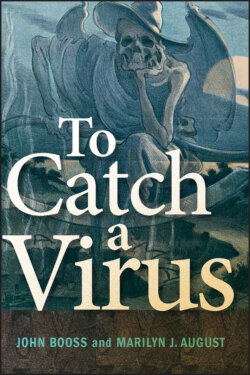Читать книгу To Catch a Virus - John Booss - Страница 27
Introduction
ОглавлениеThe host is well defended against virus infections, for the immune system has several weapons at its disposal. Among these weapons are antibodies which develop in response to and are specifically targeted against the infecting agent. Antibodies perform a number of host defense functions, including combining with the virus, thereby neutralizing it, and attaching to infected cells to promote their destruction. Each of these activities prevents further multiplication and spread of the virus. Antibodies develop from days to weeks after infection, leaving evidence of specific viral infection. For decades the measurement of antibodies was the principal means by which viral diagnostic labs established the identity of a viral infection. Serological measurement of antibodies was less cumbersome and costly than the isolation of viruses in animal hosts. In addition to its highly accurate specificity, another remarkable feature of the immune system is memory, the basis by which the host recognizes the appearance of a previously encountered virus (32). Immunological memory is also the basis of vaccination. If a host can be exposed by vaccination to a virus or its components in a less harmful fashion than natural infection, immunity will be induced to protect against future infection.
The emergence of immunological concepts in the latter half of the 19th century and at the start of the 20th century and the development of assays to measure antibodies against invading pathogens transformed therapeutic approaches and management of infectious diseases. Like virology, the science of immunology developed in the wake of advances in bacteriology. Crucial to the development of immunology was the understanding of mechanisms of defense. These were first understood in the protection against reinfection for certain well-recognized diseases such as smallpox.
The early story of the immune response includes smallpox vaccination and the phagocytosis-versus-humoral immunity debate with the joint award of the Nobel Prize to Elie Metchnikoff and Paul Ehrlich in 1908 for their seminal work (1). Early assays including complement fixation, neutralization, and hemagglutination were fundamental to early viral diagnostic labs and made clinical laboratory diagnosis more accessible. With these key discoveries, Koch’s postulates gained new meaning as applied by T. M. Rivers for viral diseases (36).
